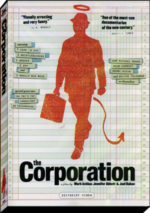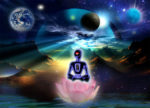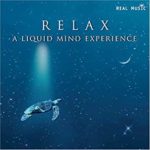
If you’re looking for a story about about someone who has cured herself of a chronic health problem, well, this is not it. I’ve certainly made progress in coping with chronic pain and anxiety, but it is still part of my daily life. Even so, I’ve learned a lot over the years – information that could be useful to others.
I initially resisted starting a blog on health issues, but then I realized how much other bloggers helped me. I am so grateful to all the people who shared their stories and suggestions. If they hadn’t, I would have really missed out. Why should I assume that something I share wouldn’t help someone else?
Disclaimer: I am not a medical doctor. I am simply sharing my personal experience, which is in no way intended to diagnose or treat any health condition. Consult a health professional for any health concerns you may have.
In this overview post, I’ll give you some background on my healing journey. Having dealt with health issues for decades, I could tell a long tale. (Yawn.) But I’ll try to spare you and stick to the highlights.
My primary health issues are (1) fibromyalgia/chronic pain and (2) anxiety/complex PTSD. (If you’re not familiar with the term “Complex PTSD”, check out this Wikipedia article.) In my case, I believe they are related. But to keep things reasonably coherent, I’ll be focusing primarily on the fibromyalgia in this post. My adventures with anxiety/PTSD will be covered in other posts.
Initial Symptoms & Diagnosis
It all started with severe fatigue in mid-2002. I had no energy. Zip. Nada. Every movement was a Herculean effort. Even breathing wore me out. I thought I had Chronic Fatigue Syndrome. After doing some research, I made an appointment with a local neurologist in December 2002.
He took over a quart of blood (I’d never seen so many vials!) and tested me for just about everything – from rheumatoid arthritis to multiple sclerosis. There is no blood test for fibromyalgia; it is largely a diagnosis of exclusion. Meaning, if it’s not anything else a doctor can name, they throw it in the “fibromyalgia” pile. (At least it’s better than the “It’s all in your head, see a shrink” pile.)
I didn’t know it then but I was lucky. This neurologist knew about fibromyalgia. Unlike many people whose stories I’ve heard, I was correctly diagnosed by the first doctor I saw. This is rare – especially back then. Most people with fibromyalgia see many doctors before getting diagnosed.
Another good fortune was this neurologist was familiar with the work of Dr. R. Paul St. Anand and his “Guaifenesin Protocol“. Despite the lack of scientific evidence, it seemed to work for me for the first two years. I also was put on conventional phramaceuticals, like anti-depressants and muscle relaxers. However, over time the pain got worse and I started on my long quest for a cure.
The Quest for a Cure
Like many people with fibromyalgia, I went on a multi-year, multi-dollar adventure. Over the next ten years, I:
- Spent hundreds of hours reading books, surfing the Internet, reading blogs, chatting in chat rooms.
- Tried dozens of conventional pharmaceuticals.
- Spent thousands of dollars on alternative health schemes. Swallowed hundreds of dollars of supplements. Took IV treatments, got vitamin shots, applied various creams.
- Spent hundreds of dollars and many, many hours on various dietary regimens.
- Spent hundreds of dollars on psychotherapy.
- Spent hours listening to hypnosis & meditation CDs.
It’s exhausting just reading through all of this! And at the time, it was even more draining with the emotional desperation energy associated with all of these efforts. No wonder I didn’t get well!
Yet along the way, I collected numerous tools for my coping toolbox. Tools that I want to share with this blog.
A Solitary Journey
I think it’s important to also convey my living situation, as I think this impacts people’s differing healing and coping experience. I was (and still am) quite socially isolated. (Here’s where my Complex PTSD becomes a problem multiplier.) I am single and have no family living nearby. Trust is a big issue and so I’m not good at maintaining close friendships. I actually prefer loneliness to the intense anxiety of personal relationships. As a result, I do not have much of a support system.
But I have been fortunate in other ways. I’ve had good jobs and not struggled too much financially. And though the pain makes my day-to-day life difficult, I don’t have others to care for. I have no children, nor do I have the stress of a spouse having to deal with a sick mate. When I think about health-challenged people with families, especially single mothers, I can’t help but realize that my situation isn’t so bad.
So, for better or worse, my healing journey has largely been a solitary one.
Settling into the Land of Acceptance
Many recovery programs stress the importance of acceptance. I’ve learned that acceptance is also a key component of living well with chronic pain. Things seemed to get better overall once I stopped fighting so hard.
This doesn’t mean I don’t still get angry and depressed about my situation, or that I stop trying to get better. But things aren’t as emotionally intense all the time. I guess you could say I’ve “turned down the volume” on my anger, desperation and depression – emotions that take up a lot of energy.
This certainly didn’t happen overnight. It’s a process – like the five stages of grief: Denial, Anger, Depression, Bargaining, and Acceptance. And there’s no set timetable or route – everyone is different.
See my related post Three Important Lessons for Healing for more on this.
Conclusion
I hope this background information has been helpful. It’s useful to know about the bloggers so you can evaluate and compare situations and suggestions. As I’ll probably state ad nauseam in my blog, everyone is different. My coping strategies have been pieced together from dozens of sources, each one being a unique and valuable part of the puzzle. With this blog, I hope to make my own contribution.
Image Credit: Image by Mogollon_1 © Copyright 2018 by Mogollon_1 and licensed for reuse under this Creative Commons License via Flickr



